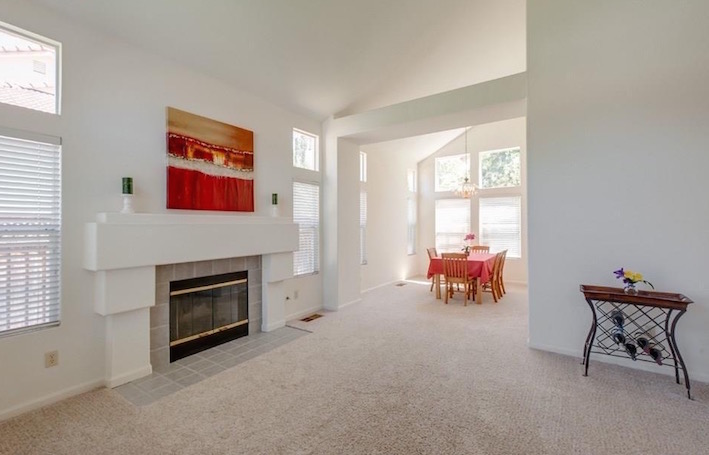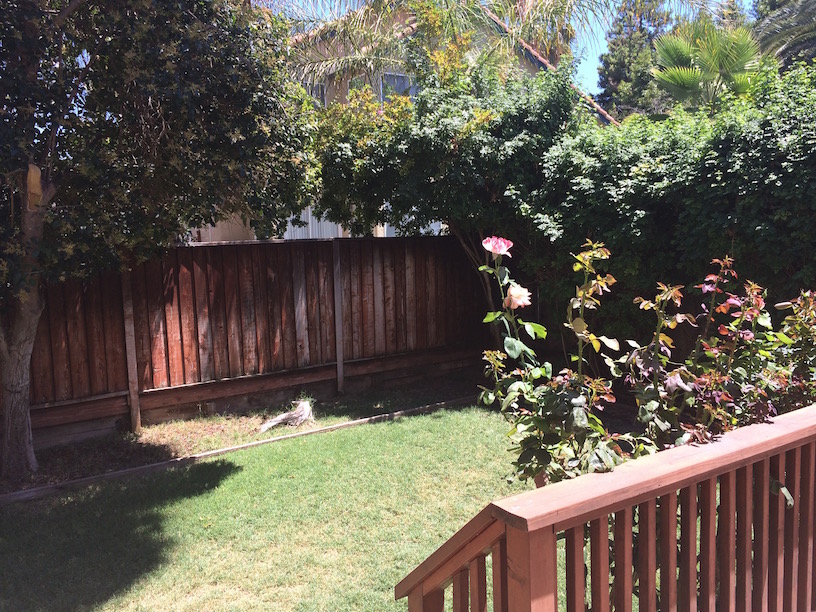We all have our characteristics, tics, mannerisms, habits, and the like. Without being altogether aware of it, over the years I have acquired a consistent behavioral pattern when it comes to making major purchases such as cars, high-end stereo gear, and in this case, a house.
I’m a planner and researcher type, a consumerist iceberg. All but a sliver of my action is hidden under the surface. I enter the endgame with the larger decisions made, so typically I do little in the way of shopping in the usual term. Consider my modus operandi with last year’s automobile purchase; I thought about it for months, researched and looked and thought, then took an extended test drive via a rental of pretty much the same make and model I sought. When the moment came to buy, I had already picked out the very car from the dealer’s inventory web site. With the money end all settled, I swooped into San Francisco Toyota in a 2003 Honda Civic and swooped back out in a 2014 Toyota Camry XLE. Game and match.
However hasty such shopping may appear to the casual observer, it is actually neither impulsive nor impetuous. We have here yet another manifestation of a professional musician’s credo: no matter what it takes, even if it damn near kills you, make it look easy and spontaneous. Dolly Parton’s dazzling quip to Johnny Carson on The Tonight Show comes to mind: honey, you have no idea how much it costs for me to look this cheap.
I was right in character when it came to my current enterprise: Scott Buys His Dream House. The idea had been percolating for years, taking on various manifestations along its journey to full realization. Then came an extensive seeking out of the where. I set four non-negotiable requirements, or tests, the failure of any one mandating the failure of the whole:
- It must be a sparkling suburb that expresses the classic American Dream in all its considerable glory
- It must be a plausible commute to/from San Francisco
- It must offer well-made, recent-model separate family homes that are affordable to the upper-middle/professional class
- I must like it. (More or a less a given provided it passes Tests 1–3, but you never know.)
San Francisco itself, mind you, scores solid zeros on all but No. 2, which warrants about a C- due to frequent MUNI meltdowns and crowding, nonexistent and/or insanely expensive parking, walking through chilling zephyr winds while avoiding obnoxious panhandlers and feral street types, grime and filth everywhere, etc. So it was out into the greater Bay Area for me.
Plenty of inner Bay Area communities pass Tests Nos. 1, 2, and 4. But they flunk Test No. 3 big time as the poisonous miasma of San Francisco’s surreal property prices spreads far and wide. Buyers are fleeing outwards in droves. A million dollars for an unhabitable hovel in Berkeley: obscene. The situation has spread even to older upscale areas such as Walnut Creek. Thus one must expand one’s gaze outwards.
By definition any area in plausible distance from a BART terminus station scores well on Test No. 2, since it makes commuting to San Francisco possible without excessive traffic angst. Travel times on BART aren’t all that much of an issue since you’re just sitting there while the train rolls. The longer the travel time, the earlier you start. So consider the terminus stations—i.e., those at the end of their respective lines—as bases you drive to or from. Here’s what my researches, travels, and the like have taught me about that:
- You can forget about the SFO terminus since it encompasses the peninsula and abuts Silicon Valley. Total failure of Test No. 3.
- The Fremont terminus achieves a solid B on Test No. 1 (depending on where you go from there), but it’s about a D on Test No. 3.
- The Dublin/Pleasanton terminus gets an A on Test No. 1 (also depending on where you go from there), but only a C-/D on No. 3. The Amador Valley area is pricey, albeit not surreal.
- The Richmond terminus fares better than you might think, despite Richmond’s sickening failure of Test No. 1. That’s because the Richmond terminus allows access to Martinez and Vallejo, both of which earn about a C- on Test No. 1 and a D+ on Test No. 3. Both, however, come close to failing No. 4.
- The Pittsburg/Bay Point terminus earns a potential A+ on both tests No. 1 and No. 3. The areas nearest to the station score poorly—Pittsburg flunks both Test No. 1 and (especially) No. 4. But the eastern edge of Contra Costa County, within the outer periphery of Pittsburg/Bay Point’s sphere, goes gold across the board. In a few years the terminus will extend to the Hillcrest station, thereby shrinking driving time in favor of BART time.
So that was that: East County it will be. The actual town, whether southeastern Antioch, Oakley, Brentwood, or Discovery Bay, wasn’t as critical. They’re all pretty nice. Nevertheless, Brentwood—with its gorgeously landscaped new developments that complement, rather than obliterate, a cozy long-established Delta farm town—knocked Test No. 4 out of the park with an unconditional A++. Oakley took a strong second place with a big fat A.
So: the house. That was easier. Real estate resources such as Zillow and Realtor.com eliminate a lot of the spadework that used to take so much time and energy. Nevertheless, you still need to get out there in person; statistics, a description, and pictures can tell you only so much. But you can do a lot of the critical stuff—neighborhood look and feel, upcoming changes, crime statistics, etc.—on your own without taking up an agent’s time. Then you get yourself an agent and mortgage pre-approval, and you go to it.
That’s what I did. After pages and pages of Zillow listings, I got my pre-approval taken care of and scheduled a house-viewing day with a real estate agent. For about a week preceding our first trip out I revised, edited, and pared down my list of houses. (A few houses sold themselves off my list. So it goes.) The final five included two A+ choices and three A-/B+ models. If none of the five panned out, well, tomorrow is another day.
Out we went. I kept my notebook handy. One A+ house dropped to F very quickly, according to my notes. awfully lived-in for 10 yrs old. smoker on the front porch! butts in ashtray. animals, pets? messy cat and dog dishes on driveway. carpets? pee and smoke. home-installed security camera? wires all over roof. ICK paint colors inside; have to paint everything. Carpets tired. Kitchen SUCKS (underlined heavily). Appliances NO. Paved over back yard—???? All cement?? ACKK (also underlined heavily.)
So much for that house. Besides, it was too big.
I downgraded a more modestly-priced B+ house to a B: lovely neighborhood! pretty! kinda small. small. bathrooms like apartment. too small. nice kitchen.
Another slightly higher-priced B+ house suffered the same fate: gated community. pretty streets. too small (underlined twice). kitchen??? (as I recall, it was elegantly appointed but uninspiring.)
The next page says nothing about the house, but it says plenty about the deposit, the warranty, and the cost of the escrow-period inspections. Then follows one simple, circled annotation:
This is it.
I had already gone there twice before to give it a quiet looky-look and scope out the neighborhood. I had read its Zillow page repeatedly, obsessively. I had consulted Google Earth. I had studied neighborhood/city statistics, crime statistics. I even dreamed about it one night. All this had me about 90% sure that it was, in fact, the one. Once I got inside, and saw that it was an order of magnitude better than I had even dared to hope, I knew.
My canny and wise realtor helped me to fashion a strong offer. It was in the seller’s hands the next morning. They accepted it a day later.
This is it. Brentwood, California: here I come.

A realtor’s pic (slight wide-angle lens distortion) of my new living and dining room

My pic (no distortion) of part of my new back yard, seen from the stairs leading off the deck
